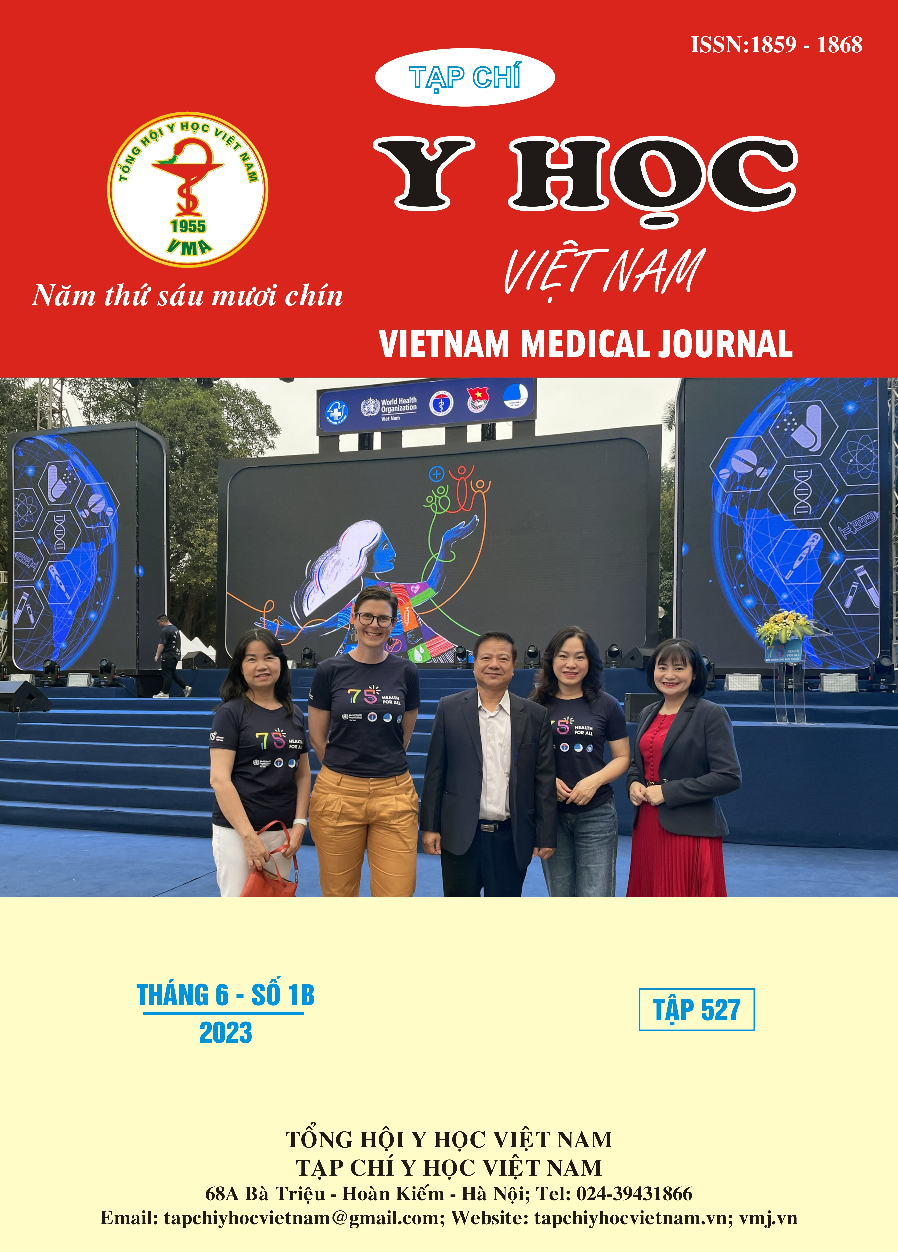STUDY ON OPTIMIZING THE EXTRACTION OF DIHYDROMYRICETIN FROM AMPELOPSIS CANTONIENSIS PLANCH LEAVES
Main Article Content
Abstract
Ampelopsis cantoniensis leaves contain large amounts of flavonoids, mainly dihydromyricetin, which have long been used by folk to treat stomach ulcers diseases. Our new study is to determine the optimal parameters in dihydromyricetin rich extracts from Ampelopsis cantoniensis leaves. The obtained results show that the extraction parameters can be applied in the industry to extract the dihydromyricetin rich leaves extracts, contributing to the creation of products for service community health care.
Article Details
Keywords
Ampelopsis cantoniensis, dihydromyricetin
References
Bộ Y tế (2017), Dược điển Việt Nam V, tập 2, trang 1390-1391, Nhà xuất bản Y học, Hà Nội.
2. Nguyễn Thượng Dong (2008), Kỹ thuật chiết xuất dược liệu, Nhà xuất bản Khoa học Kỹ thuật, Hà Nội.
3. Viện Dược liệu (2006), Cây thuốc và động vật làm thuốc ở Việt Nam, tập 1, trang 423-425, Nhà xuất bản Khoa học và kỹ thuật, Hà Nội.
4. Bhattacharya Sankha (2021), "Central composite design for response surface methodology and its application in pharmacy", Response surface methodology in engineering science, IntechOpen.
5. Chenguang Wang, Wei Xiong, Sathyanarayana Reddy Perumalla, Juanguo Fang, Changquan Calvin Sun (2016), “Solid-state characterization of optically pure (+) – Dihydromyricetin extracted from Ampelopsis grossedentata leaves”, International Journal of Pharmaceutics, 511, p.245-252.
6. Khan Muhammad Kamran, Abert-Vian Maryline, et al. (2010), "Ultrasound-assisted extraction of polyphenols (flavanone glycosides) from orange (Citrus sinensis L.) peel", Food chemistry, 119(2), pp. 851-858.
7. Umair Muhammad, Hedong Lu, Juan Wang, Jinzhi Han, Xiaoyu Zhu, Zhaoxin Lu, Sultana Tayyaba, Yousef I. Hassan (2017), “Optimizing the maximum recovery of dihydromyricetin from Chinese vine tea Ampelopsis grossedentata using response surface methodology”, Molecules, 22, 2250, p.1-15.
2. Nguyễn Thượng Dong (2008), Kỹ thuật chiết xuất dược liệu, Nhà xuất bản Khoa học Kỹ thuật, Hà Nội.
3. Viện Dược liệu (2006), Cây thuốc và động vật làm thuốc ở Việt Nam, tập 1, trang 423-425, Nhà xuất bản Khoa học và kỹ thuật, Hà Nội.
4. Bhattacharya Sankha (2021), "Central composite design for response surface methodology and its application in pharmacy", Response surface methodology in engineering science, IntechOpen.
5. Chenguang Wang, Wei Xiong, Sathyanarayana Reddy Perumalla, Juanguo Fang, Changquan Calvin Sun (2016), “Solid-state characterization of optically pure (+) – Dihydromyricetin extracted from Ampelopsis grossedentata leaves”, International Journal of Pharmaceutics, 511, p.245-252.
6. Khan Muhammad Kamran, Abert-Vian Maryline, et al. (2010), "Ultrasound-assisted extraction of polyphenols (flavanone glycosides) from orange (Citrus sinensis L.) peel", Food chemistry, 119(2), pp. 851-858.
7. Umair Muhammad, Hedong Lu, Juan Wang, Jinzhi Han, Xiaoyu Zhu, Zhaoxin Lu, Sultana Tayyaba, Yousef I. Hassan (2017), “Optimizing the maximum recovery of dihydromyricetin from Chinese vine tea Ampelopsis grossedentata using response surface methodology”, Molecules, 22, 2250, p.1-15.


